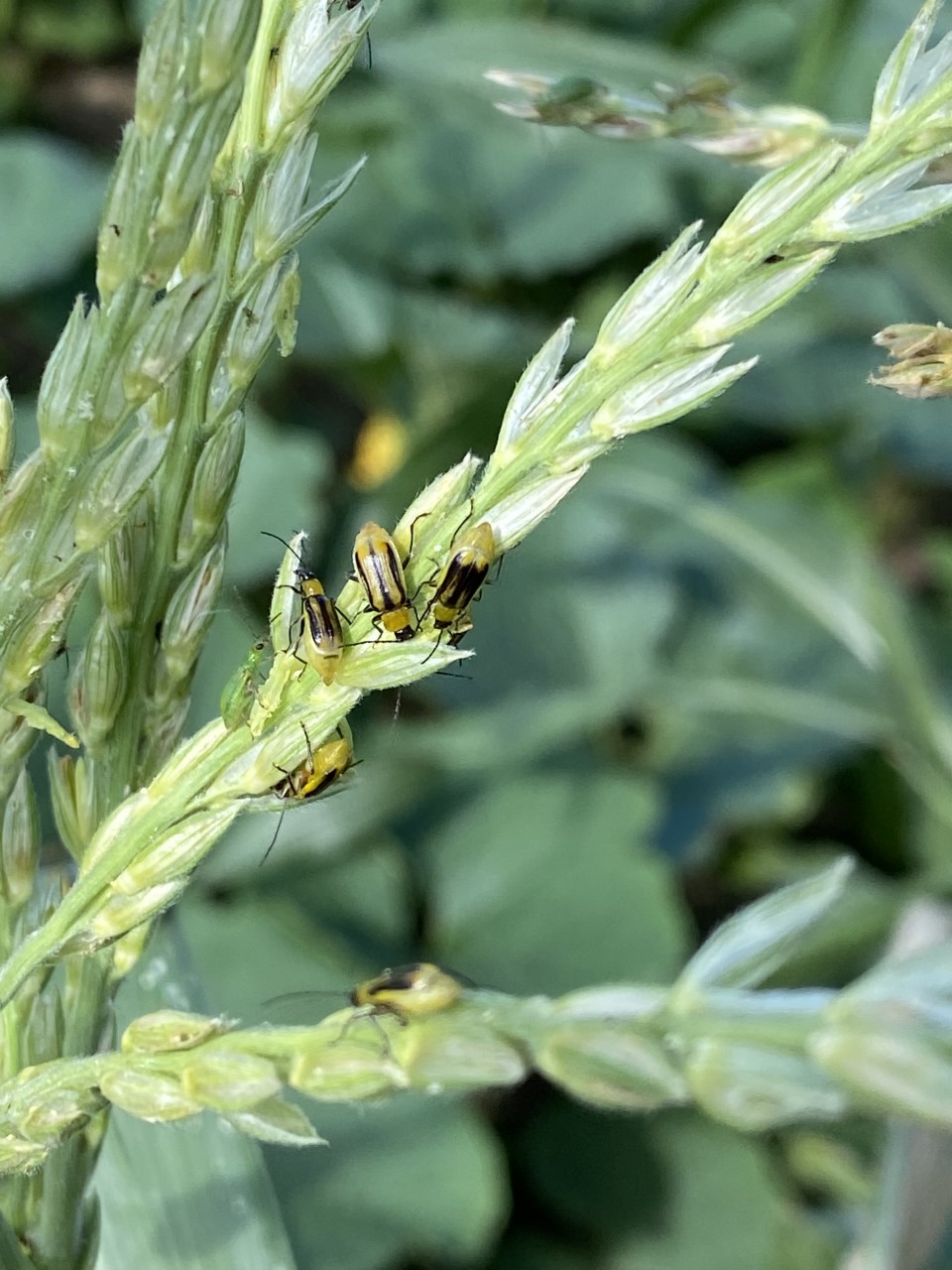
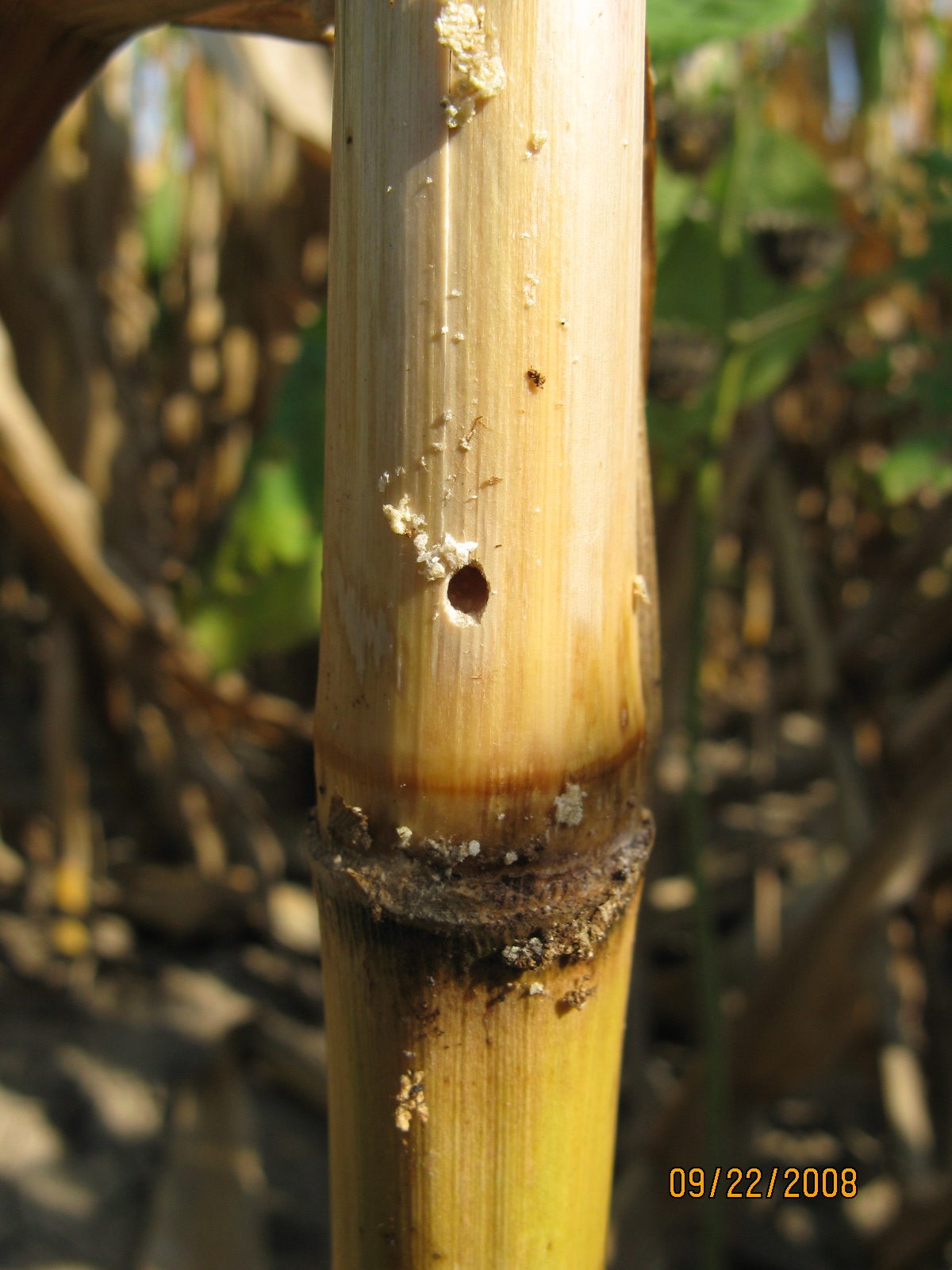
- western bean cutworm
- corn rootworm beetles
- Japanese beetles
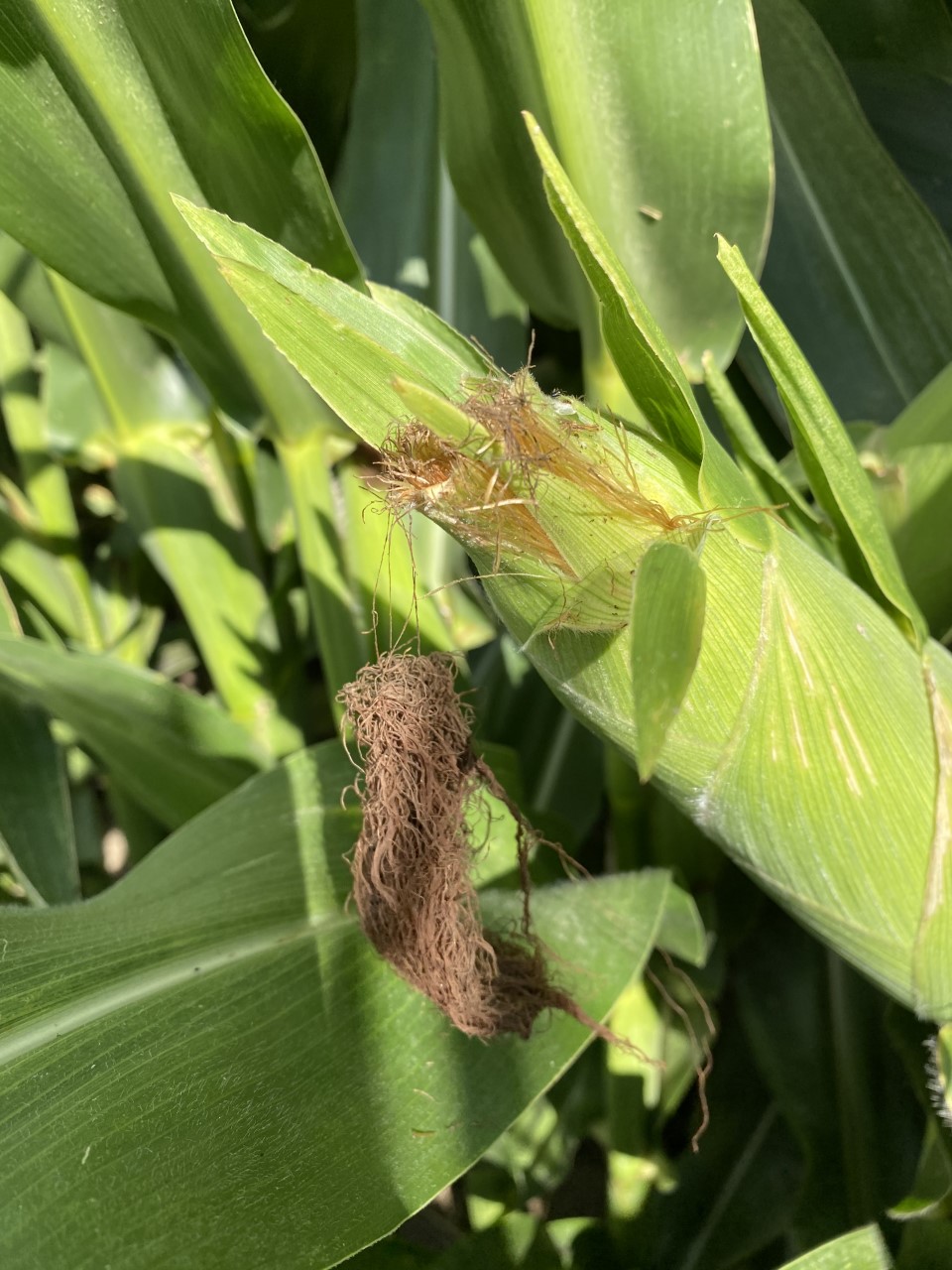
- corn rootworm beetles
- true armyworm
- black cutworm
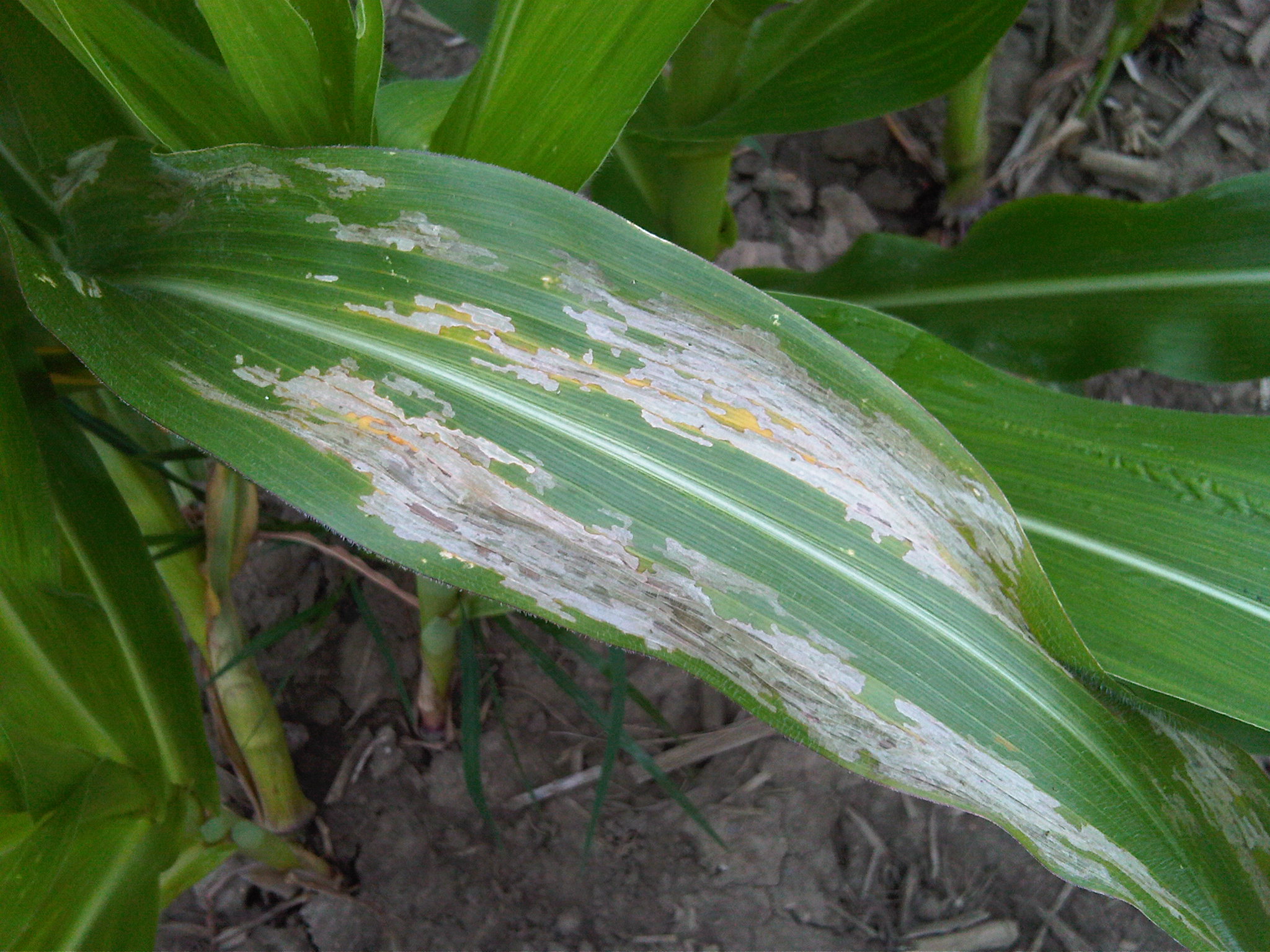
- wireworms
- white grubs
- corn rootworm larvae
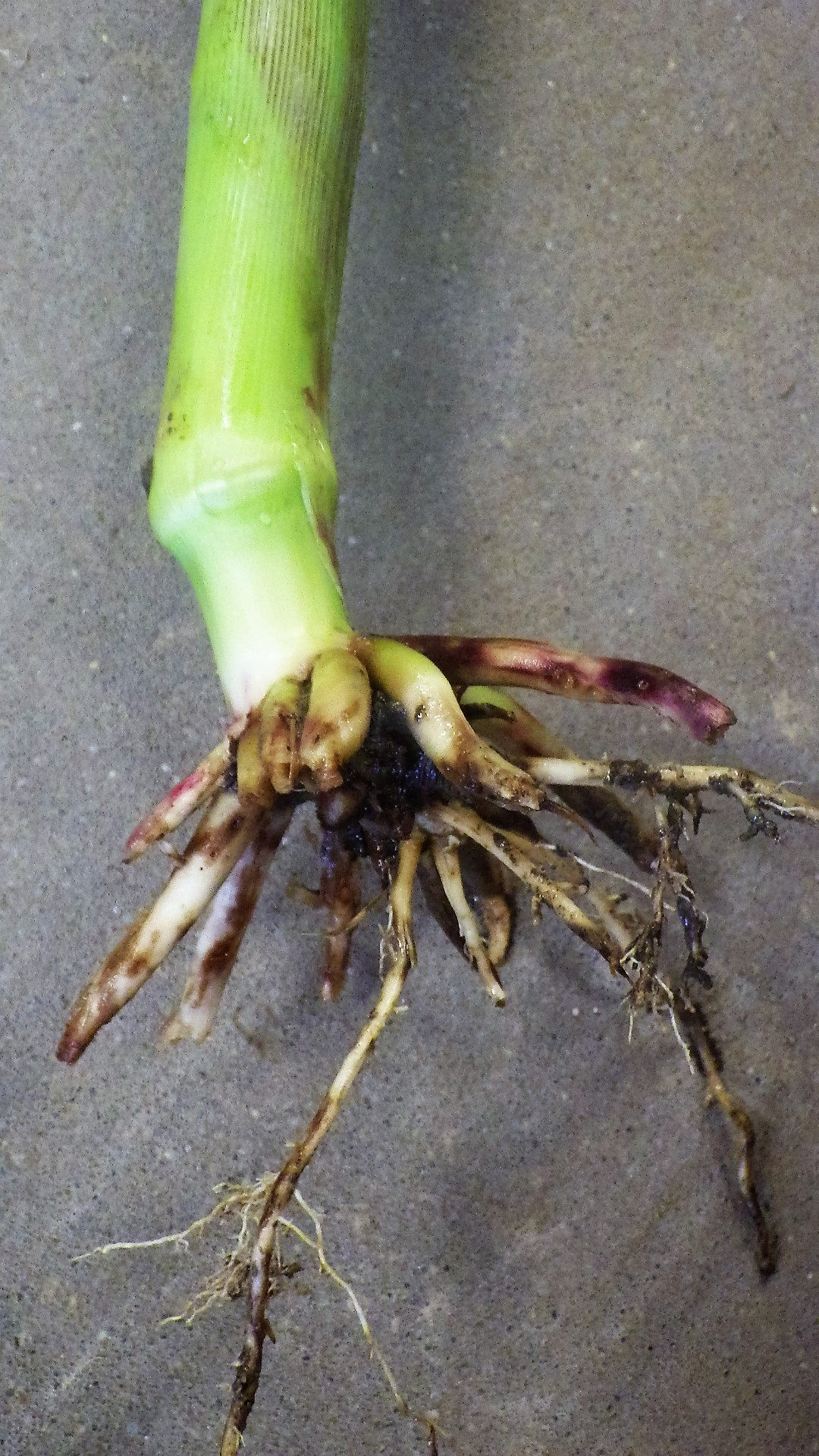
- western bean cutworm
- corn earworm
- fall armyworm
- European corn borer

The European Corn Borer
The European corn borer (ECB), Ostrinia nubilalis, is one of the most destructive insect pests of field, seed and sweet corn, and is an increasing concern on peppers, potatoes, hops and other host crops in Canada. ECB is distributed from the southern portions of the Prairie provinces to the Maritimes, generally wherever corn is grown. ECB was introduced into North America in 1910 from a central European broom factory. It was first reported in Ontario in 1920, 1925 in New Brunswick, 1926 in Quebec, 1929 in Nova Scotia, 1948 in Manitoba, 1949 in Saskatchewan and 1956 in Alberta (was eradicated but re-appeared in 1980).
European corn borer can reduce yield of corn, increase harvest time, and reduce grain quality due to disease and mycotoxin contamination. Some studies have shown that one ECB per plant could reduce yield by 3 to 5 %, and greater reductions can be expected under high corn borer pressure.
Western Bean Cutworm
Western bean cutworm (WBC), Striacosta albicosta, was first discovered in Canada in 2008. Native to the Great Plains region of the US, the distribution of WBC slowly expanded into the US Corn Belt in the early 2000’s, Ontario, Canada in 2008, and in all the Maritime Provinces since 2017. Overwintering of WBC has been documented in Ontario and Quebec.
Yield loss due to WBC has been estimated to range from 3-15 bu/ac with average infestation of one larva per plant. In Canada, WBC feeding injury is associated with increased ear mold and mycotoxin contamination of grain corn.
Corn Rootworm
Corn rootworm (CRW) (Diabrotica spp.) are beetles that feed on corn as both the adult and larval stage. Larvae feed on corn roots, resulting in lodging, reduced harvestability, and yield loss. CRW have been present in Ontario and Quebec since 1975, spread to Nova Scotia, and were recently detected in British Columbia and Manitoba for the first time in 2016 and 2021, respectively.
